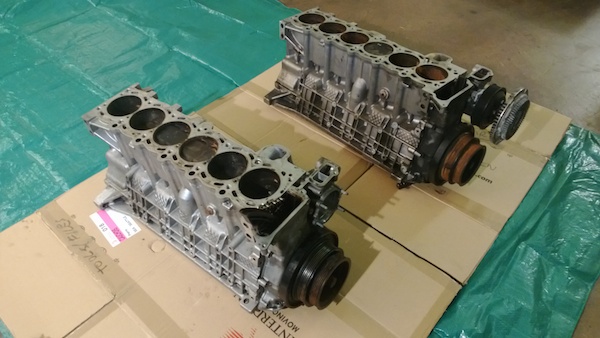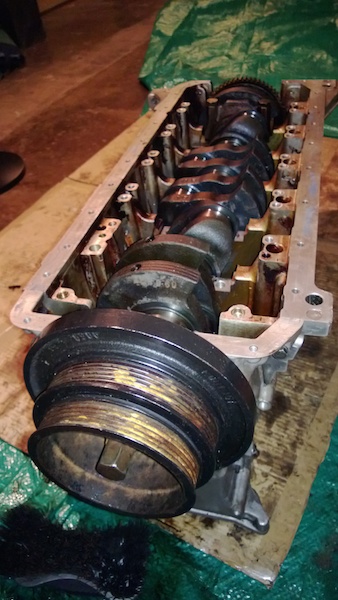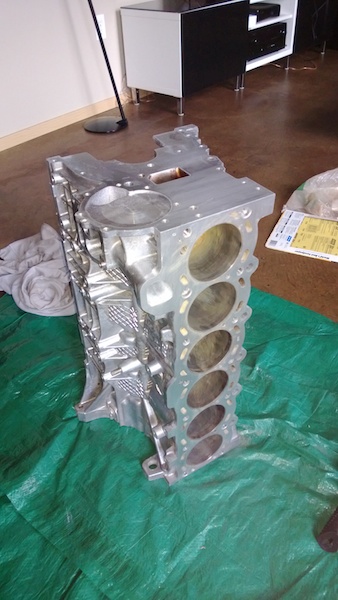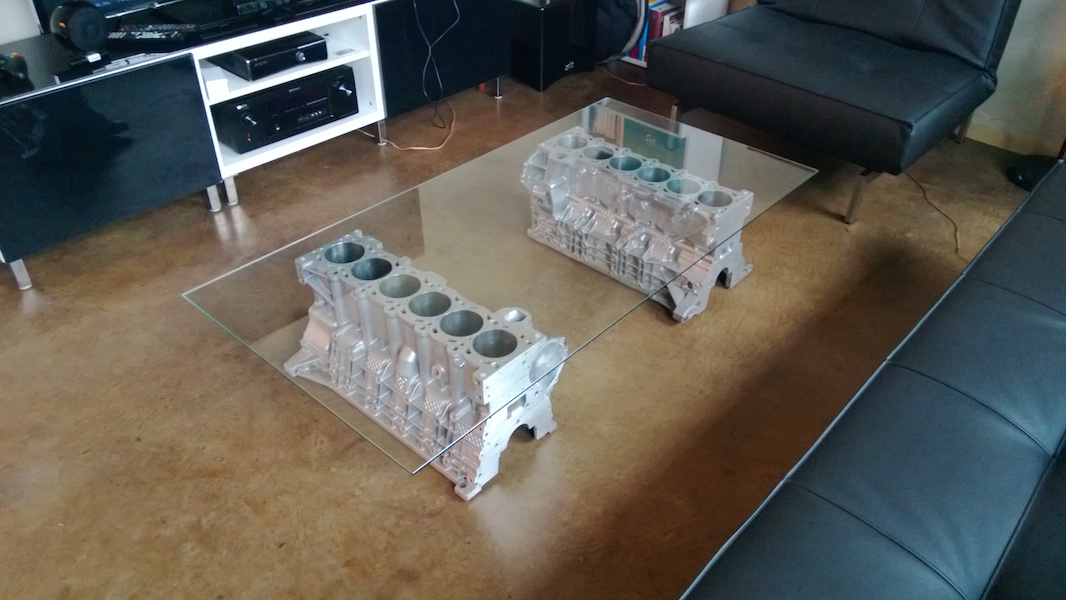Ever since I had seen coffee table on the british TV show called Top Gear (made from a Jaguar V12 engine) I wanted to have an engine-based coffee table. A quick search on the Web showed that anyone can buy that for just over a thousand bucks but I also found a handful of results from people who had done that before and were showing it on some forums: so I set out to build my own.
Heres what I discovered along the way. Hopefully itll help you build your own!
Picking the engine blocks
Most car engine are not that big. Even V6 blocks can be pretty small (barely over a cubic foot). So most tables made out of a single engine block are small, or at least smaller than I wanted: these table are 3 feet long, 4 max. 6 cylinders inline engines are about 2 feet long, but very narrow. So when you set out to buy one, make sure to measure it and then factor in how youre going to rest or affix the table itself on it: an engine block is not necessarily flat.
If you search long enough for it you might find some service manual or schematics of the engine you want on the internet. It can help, even if it’s in German: the technical drawings and dimensions will help you design the object before you actually buy the part.
While in the process of choosing and engine, I tried to pick one that looked good, but also learned about its history. I ended up looking specifically for 6 cylinders inline from BMW mainly because of the form factor (long enough and perfectly flat) but also because I like the brand, and because it’s an engine which performances were acclaimed all these years. The current generation (M54) is used in most powerful BMWs, and its sport version (S52/S54) powers the legendary M series. I ended getting really lucky on Craigslist, and found a pair of identical M52: it was produced at the end of the 90s, which is when BMW moved from cast iron blocks to aluminum, the latter being much lighter which is important, because an engine is heavy. Depending on how many parts are still in it (camshaft, pistons) it can be several hundred pounds. You will need a friend or two to help you carry it, and presumably a very sturdy dolly.
Buying the engine blocks
I strongly suggest you go and see it before you buy it. If possible, turn the crankshaft to see if the pistons move freely, if still in there. Make sure its in a good enough shape that you can take it apart fully (you probably only need the engine block, so maybe you can get the seller to give you a better price for only that part, and let him sell the rest separately or you can do it yourself! That way you can keep some of the parts for other projects. Some people also use pistons to make feet for the table
On the day you take it home, bring friends to lift it in and out of the trunk, and bring tarp or cardboard to protect your car. An engine block is greasy and can leak fluids even if its been in a garage for years. Heres what my engine blocks looked like when I brought them home (we had cleaned them before putting them in the trunk with a water jet)

Tearing the engine apart
An engine is hard to dismantle. You will need space, and some tools. Don’t try to use cheap or tools that almost fit the bolt but dont. They will break and you will hurt yourself, which wouldn’t even be as bad as putting a dent on the block or rounding a bolt.
Also know that the place where you will work on this project will be dirty. Engine grease, oil, chemicals: you will need gloves, detergent, and you will leave smudges on everything you touch while working on it.
The hardest part for me was the Crankshaft bolt: its very tightly screwed, a few hundreds PSIs. Youll need either a big lever and a way to lock the crankshaft in place, or an impact driver: a pneumatic one, electric impact drivers are just not strong enough. Easiest way to solve the problem: find a garage with a friendly mechanic who could loosen it for you, they have the tools, itll take them half a minute. Also, you’ll have to find out beforehand if it is reverse-threaded or not: just to make sure youre unscrewing the bolt and not tightening it! Finally if pulleys are still on the block, you may need a special pulley removal tool. Again, a mechanic can help you with that (these are not easy to find and can sometimes be ordered only by dealerships).

All these questions make a case for why you should look for the engine service manual and schematics :)
Cleaning, sanding and polishing
An engine is dirty. You’ll need it cleaned. If you try to clean it yourself there will be water, chemicals and engine grease everywhere so I suggest you avoid doing that that in the street or your lawn. If you do that in your driveway, clean it very thoroughly after if you don’t want to skid the next time you drive on it. You will need a high pressure jet, an industrial degreaser and a lot of time Since I live in an apartment I ended up finding a garage that had a hot jets parts cleaner. It will cost you a few bucks but will save you a lot of time and trouble.

As you can see cleaning will not be enough! you’ll need to do some sanding and polishing too and maybe remove rust: a chemical rust remover will do the big part of the job, sanding should do the rest. You will need to do most of it manually or with a small rotary tool like a Dremel. Give it half a day, prepare to make some noise, and it will generate a lot of metal dust so wear a breathing mask during that operation and protective goggles Trust me on this one, I didn’t and whatever came out of my nose in the next days was black and did not look healthy:
When sanding, start with the inside (cylinders) and finish with the outside and the top. Clean and vacuum the dust regularly. Sanding is a 3 steps process: first start with rough grain sand paper to make the surface even, then medium grain to remove the scratches, then fine grain to make it shiny and clean.
Assembling the table
That’s where you can get creative (or not! I just rested a glass sheet on top of the engines with some transparent vinyl spacers). Make sure the table doesn’t tip or break when something heavy sits on top of it. Use tempered (also called safety) glass. Normal glass will break. Also, you should know that the weakest point of a tempered glass sheet is bezel, so be extra careful when moving it or storing it vertically.
Heres what the final result looks like:

Time and Cost
This will vary a lot depending on the parts you pick. Heres what it was for me:
- 2 engine blocks: $300
- Cleaning it at a shop: ~$120
- Missing tools: $50-$100
- Time: ~20-30 hours